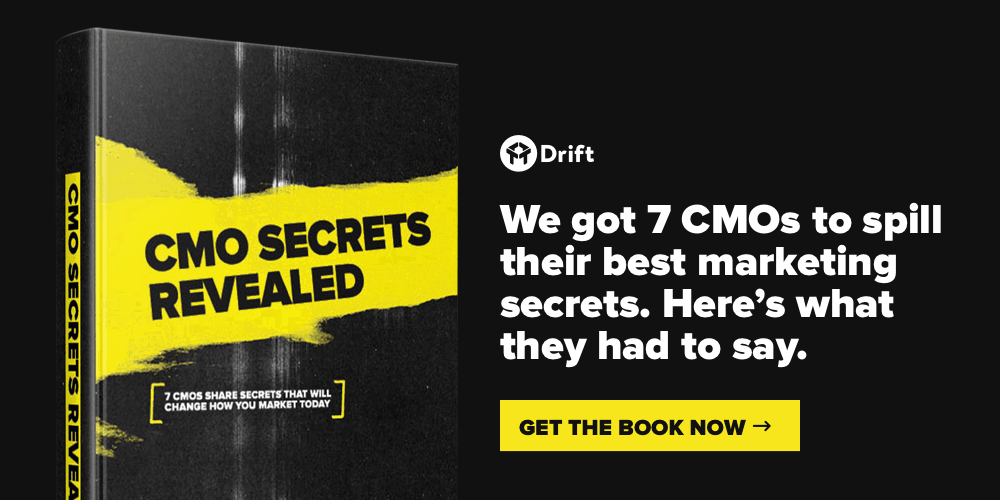
No one has truly figured out a tried-and-true content marketing model that works for everyone. Content marketing is an art as much as it is a science.
Heck, our industry is loaded with hindsight bias, and marketers can’t even agree on the definition of content marketing, so how can we trust industry best practices? If you’ve listened to any episode of Joe Pullizzi and Robert Rose’s podcast, This Old Marketing, you’ll know what I’m talking about.
And yet we’re bombarded with content marketing gurus and so-called digital marketing experts selling snake-oil content marketing strategies by leading you through a series of MLM-esque webinars and insubstantial case studies (yes – it upsets me).
The truth is – we’re all figuring it out. Every industry is different. Every buyer persona carries its own nuances. Every business is tasked with jumping through its own unique set of legal hoops.
My point is – the best way to figure it out is by executing and learning from the mistakes you’ve made along the way. I’ve made a ton in my career, and have noticed many other organizations falling for the same pitfalls as I did.
Instead of claiming all my strategies work with every business, I hope this guide can help you build frameworks to avoid costly content marketing mistakes that I’ve made in the past. Let’s get right to it!
1. Falling For The Gary Vaynerchuk Fallacy
Hiring a designated Content Marketer is exciting for everyone. HR wants your opinions on how to write heartfelt, clickbaity recruiting LinkedIn posts, the social team wants to start a GIPHY channel, sales wants one-sheets and deck templates, all the while your CMO drills the need to hit the SQL goals for the quarter.
Early into my career, I said yes to every content opportunity. I quickly realized I was sitting in on pointless meetings and spending most of my time on projects that served no purpose other than “just because.”
I became a yes-man. A one-man content production engine with no north star. It felt like I was strapping myself into one of those medieval torture devices that pull you in every direction. It was only a matter of time before my limbs fell off due to my lack of focus.
Granted, content plays an integral role in how businesses are run today, but bandwidth is all too commonly overlooked. This idea of being everywhere on every platform is perpetuated (or misinterpreted) by Gary Vaynerchuk and his ilk, who suggest that all businesses should invest in Facebook, Snapchat, Instagram, YouTube, Weibo, Xanga, Anchor, TikTok – or whatever the kids are into these days.
While I admire Gary’s content expertise, I can see why many businesses are misled by his sentiment. It’s easy to experiment with new platforms when you already have a massive audience that grows organically and hops from platform to platform. But it’s impossible to invest all your time in multiple platforms when you’re just getting your feet wet. With your limited bandwidth, your content on each platform won’t be unique or valuable enough to be worth following.
Instead, take the time to speak with your customers and gain an extensive understanding of their needs. Identify where they spend the most time and invest 80% of your time and resources in the channels you’re confident about doing well in.
Whether it’s with a blog or a YouTube show, build a loyal audience by delivering high-quality, valuable, unique content consistently on these channels. Do this long enough and the results will come.
Remember, always aim to be the best at whatever you do in your industry. This all starts with a thesis of how your content can help your customers succeed in your market.
Quickfire Tips ?
- Spend your time speaking with your customers and repurpose the content into case studies, testimonials, and social posts.
- Don’t set content plans farther than 90 days out. Projects and priorities shift quickly.
- Provide visibility to your content calendar and effectively communicate the additional runway time required with every new content project request.
- Say no.
2. Forgetting That Distribution Is Queen When Content Is King
The rise of walled gardens and the catastrophic myth of organic traffic has caused content distribution to become the greatest challenge content marketers face today. The belief that “if I build it, they will come,” will only set you up for failure.
Every new content piece deserves its own unique distribution strategy. What’s the point of creating a content piece that no one will see? My friend Chris Von Wilpert does an excellent job outlining how content can be distributed in today’s environment.
Quickfire Tips ?
- Create a distribution checklist to ensure your content is on the right platforms with unique copy and visualizations native to each respective platform.
- Reach out to influencers in the space and quote their opinions within the article. Let them know when your post is published and encourage them to share it.
- Work closely with your demand-gen team or designated digital marketing manager to build custom audiences that align with your target persona.
- Tailor your imagery, message, and tone to your unique audiences on each platform.
3. Favoring Best Practices Over Proprietary Data
It’s integral for every marketer to tackle any new project with a scientific approach. If you can take yourself back to middle school, this is what that looks like:
- Generate a hypothesis
- Design an experiment
- Perform an experiment
- Analyze the data
- Draw a conclusion (accept or reject the hypothesis)
- Test and repeat
Too many marketers treat case studies and blog posts highlighting ‘best practices’ as gospel, rather than using them as inspiration to tackle your next project. Jay Acunzo put it best when he said, “a best practice tries to recreate the past, and that’s simply no way to get ahead.”
A successful content marketing program is fueled by repeated experiments that inform future decisions on how to best tackle your next content project. So treat every new task like a science experiment by setting clear goals and KPIs.
Important Content Marketing KPIs:
- MoM Readership
- Time spent on page
- Unique vs Returning Visitors
- Social Shares
- Brand sentiment
B.S. Content Marketing KPIs That Need To Die:
- Number of blog and social posts
- Unqualified blog readers
- Page likes
4. Gatekeeping Potential Content Marketing Opportunities
As I previously mentioned, content can play an integral role in almost every part of your business, but it’s ultimately your job to communicate that value to the key stakeholders within your organization.
While a tight grip on your content calendar is imperative, it’s equally important to open up opportunities for collaboration across your organization. The more visibility you provide, the more opportunities and resources will be presented to you.
Quickfire Tips ?
- Leverage internal expertise: Chat with your product and customer experts to extract valuable insights that you may have missed otherwise.
- Provide visibility to new and incoming content projects via a company-wide newsletter, announcement, or Slack message. Be sure to communicate the use cases for each piece and encourage organic employee engagement on social.
- Don’t be afraid to have fun. Content can play a huge role in company culture!
For an in-depth rundown, check out my guide on how to easily earn content marketing buy–in across your organization.
Create To Your Heart’s Content
Now that we’ve finally got that out of the way, it’s your turn to run a kickass content marketing program.
If this guide was relatable and helpful in some way, please be sure to share this post with your friends, colleagues, family, bosses, pets, etc. If you have any questions, please feel free to tweet at me at @jonjmpark or email me at workwithjonpark@gmail.com. I read everything!
If you’re looking for even more pro-tips for marketers, take a look at what we learned after sitting down with seven B2B marketing leaders ?
Jon Park helps businesses build successful content marketing programs the right way – with smart data, patience, and hard work.
Editor’s Note: This is a guest post. Interested in contributing content to the Drift blog? Email Molly Sloan at msloan@drift.com.







